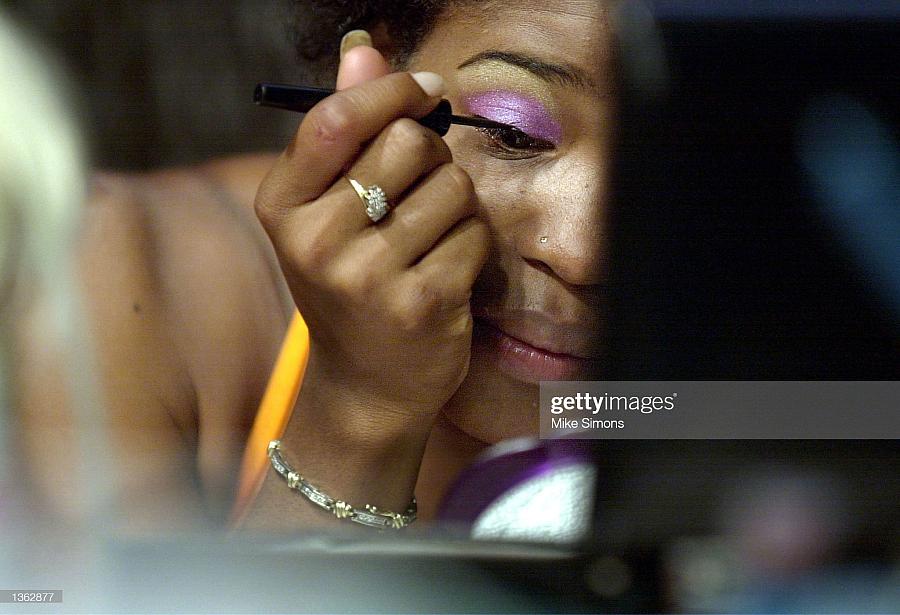The ugly cost of beauty products

Mecca, a dancer, puts on make-up while preparing to perform in the Universoul Circus August 31, 2002 in Cincinnati, Ohio. The circus is the first African American owned and operated circus in more than a hundred years.
Photo by Mike Simons/Getty Images
For Barbara Jacques, it began with a simple question: Why?
In 2010, shortly after learning she was pregnant, Jacques’ physicians identified a tumor in her ovaries. It was benign, and Jacques safely carried the pregnancy to term. But she was haunted by the question of what could have led to the health scare in the first place.
“The more I started learning about what was going on with my body, I learned that a lot of what we put in your body and on your skin is not as safe as we think it is,” said Jacques, a native of Miami with Haitian roots. She also learned that women of color are at especially high risk from harmful beauty products.
“I just became even more curious about the formulation process. Why were these ingredients in the products? And then I started learning that Black women are exposed to twice the amount of toxins in beauty products.”
Few Americans realize that the U.S. Food and Drug Administration does not require approval of cosmetic products and ingredients, other than color additives, before they go on the market.
As a result, the beauty aisle in a typical pharmacy is lined with products that contain potentially harmful ingredients, including behavioral toxins, carcinogens, developmental toxins, endocrine disruptors, heavy metals, neurotoxins and reproductive toxins.
Public health officials in the United States are aware of the presence of these substances yet have taken few steps to curtail their use. The nations of the European Union have outlawed the use of more than 1,600 chemicals in cosmetics; by comparison, U.S. regulators have banned about 11.
The use of these chemicals disproportionately impacts people of color. African Americans make up 14 percent of the population, but 85 percent of the nation’s spending on ethnic hair and beauty products.
As a health and environmental justice reporter for Inside Climate News, I recently wrote about a study that explored how racialized notions of beauty drive women of color to use potentially harmful beauty products. As a USC Center for Health Journalism 2023 National Fellow, I plan to research this topic from multiple perspectives. I want to interview researchers as they work to identify harmful ingredients in beauty products and advocates who curate online databases of “clean” cosmetics.
My interest in this topic is equal parts personal and professional, and it is deeply informed by my own lived experience. I am a Black woman and a 12-year breast cancer survivor, and I want to interview other people of color who have been diagnosed with cancers and related ailments that they worry may have been caused by their use of beauty products. I plan to examine successful models in other countries for regulating harmful cosmetics and working to safeguard consumer safety.
And, like Barbara Jacques, whom I interviewed for a story about Black women and beauty products, I now have so many questions: Is there a way to quantify the extent to which the health care system has been taxed by illnesses that might be traced to harmful cosmetics? What role do racialized notions of beauty play in the disproportionate use of beauty products by African Americans? Can social networks and greater access to information about harmful products help protect public health? Or do race and class trump all other concerns?
I am grateful that the Fellowship year will allow me to explore these issues in greater depth and help give readers insight into the forces by which some people may, quite literally, be putting their health at risk for beauty’s sake.
